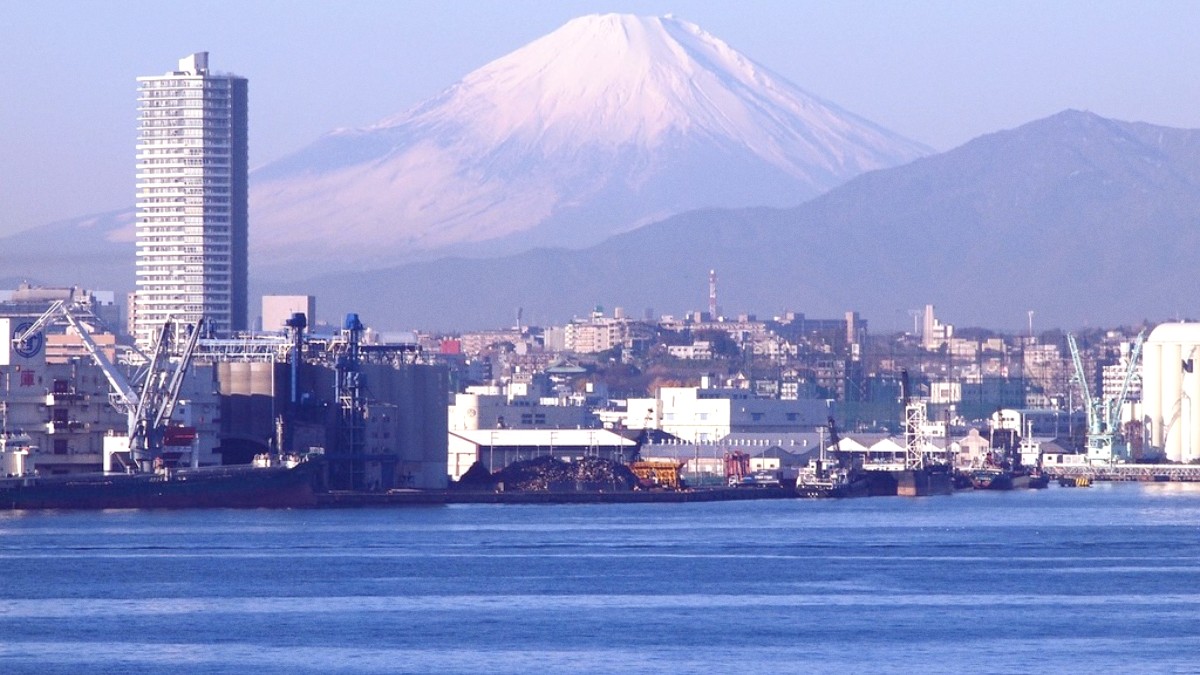
South Of Tokyo, Japan
Yokohama’s allure lies in its ability to offer both familiar comforts and novel experiences. Travelers seeking a taste of modern Japan, a stroll through a sprawling Chinatown, or a relaxing evening by the bay will find their desires met. This guide outlines the city's charm, making your journey smooth and rewarding.
Yokohama welcomes explorers, food enthusiasts, and those looking for a relaxed yet stimulating urban escape. Its reputation for cleanliness, safety, and efficient public transport supports easy exploration.
Whether your interest lies in its pioneering history, its world-class dining, or its calm waterfront parks, Yokohama promises a collection of moments that remain with you long after your visit concludes.
Yokohama, the capital of Kanagawa Prefecture, Japan, occupies a strategic position in the Kanto region. It lies on the west coast of Tokyo Bay, approximately 30 kilometers (19 miles) south of Tokyo. This proximity to the nation’s capital, combined with its deep-water port, has shaped Yokohama’s development and continues to define its identity. The city stretches along the bay, with much of its urban landscape built on reclaimed land, a testament to its maritime focus.
The city’s geography directly influenced its rise as a major port. Tokyo Bay provides a sheltered harbor, useful for large vessels and international shipping. This natural advantage was augmented by human engineering, creating the extensive port facilities that handle a substantial portion of Japan’s trade. The flat plains near the bay allowed for urban expansion, supporting the rapid growth of industries and residential areas. Hills and bluffs, like the Yamate Bluff, rise behind the coastal areas, offering scenic viewpoints and a glimpse into the city's early foreign settlements. The urban layout of Yokohama is a mix of planned modernity and organic growth, from Minato Mirai 21's futuristic skyline to the historical architecture of Kannai and Bashamichi.
Located on the west coast of Tokyo Bay.
Approximately 30 km (19 miles) south of Tokyo.
Sheltered waters ideal for shipping and trade.
Much of the city developed on reclaimed land.
Convenient access to Hakone and Mount Fuji.
Yokohama borders several other cities within Kanagawa Prefecture, including Kawasaki to the north and Kamakura to the south. This network of interconnected urban areas forms a larger metropolitan region, with seamless train and road links facilitating movement between them. The city’s location also provides convenient access to popular day-trip destinations like Hakone, known for its hot springs, and Mount Fuji, Japan's iconic peak. The region’s temperate climate, moderated by its coastal position, supports year-round tourism, with distinct seasonal changes adding to its appeal.
When planning your visit, recognize Yokohama's coastal location. Choose hotels with bay views for memorable mornings and evenings.
Yokohama experiences the typical four seasons of Japan, from cherry blossoms in spring to autumn foliage, with bay breezes offering some relief during humid summers. The city's coastal nature also means a constant connection to the sea, visible from many viewpoints, from the bustling port activity to the quiet calm of Yamashita Park.
Yokohama’s history is a story of dramatic transformation. Before the mid-19th century, it existed as a small, quiet fishing village named Yokohama-mura. Its destiny changed forever in 1859 when it became one of Japan's first ports opened to foreign trade. This event followed the signing of the Treaty of Amity and Commerce with the United States in 1858, a treaty that ended Japan's long-standing isolationist policy, known as "sakoku."
The opening of Yokohama to the world marked a pivotal moment in Japan's modernization. Foreign merchants, diplomats, and missionaries established settlements in areas like the Yamate Bluff and Kannai, bringing with them Western technologies, ideas, and cultures. This influx transformed Yokohama into a dynamic international gateway. The city quickly became a hub for silk export, a commodity in Japan's early international trade. New industries appeared, fueled by foreign capital and expertise. Gas lamps, railways, and ice cream were among the Western innovations first introduced to Japan through Yokohama, giving the city a reputation for being at the forefront of progress.
Yokohama faced immense destruction twice in the 20th century, first by the Great Kanto Earthquake of 1923, and then by Allied bombing during World War II. Each time, the city rebuilt itself, stronger and more modern, showing its enduring spirit and commitment to progress.
The foreign presence remains a tangible part of Yokohama's identity. The Yamate Bluff district, with its Western-style houses and churches, offers a glimpse into the lives of early foreign residents, providing a rich context for understanding Japan's journey to becoming a global power.
Yokohama's museums, like the Yokohama Archives of History, carefully preserve and present this unique narrative, providing insights into its role as a crucible of modernization. The city's history informs its diverse culinary scene, its architectural variety, and its open character.
To gain appreciation for Yokohama, visit the Yokohama Archives of History. It paints a clear picture of the city's rapid growth and its role in Japan's modernization.
This waterfront district showcases Yokohama’s modern face with skyscrapers, shopping centers, luxury hotels, and entertainment like Cosmo World.
The Yokohama Red Brick Warehouse now houses unique boutiques and cafes. Yamashita Park offers a green oasis along the bay, hosting the historic Hikawa Maru ocean liner.
Yokohama Chinatown buzzes with activity and authentic food. Motomachi Shopping Street contrasts with upscale European-inspired settings, while Yamate Bluff district holds Western-style houses and gardens.
Panoramic views of the city and bay from one of Japan's tallest buildings.
Historic customs buildings transformed into unique boutiques, cafes, and event spaces.
Japan's largest Chinatown, lively with colorful temples, street food, and authentic restaurants.